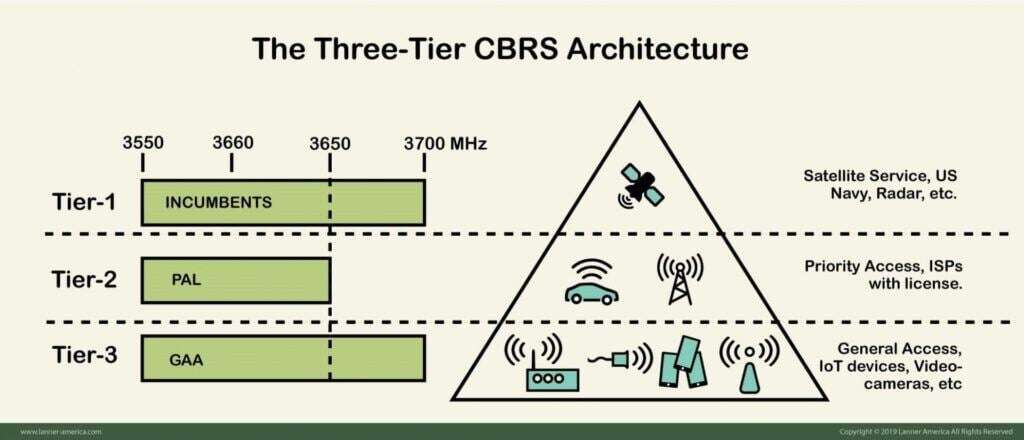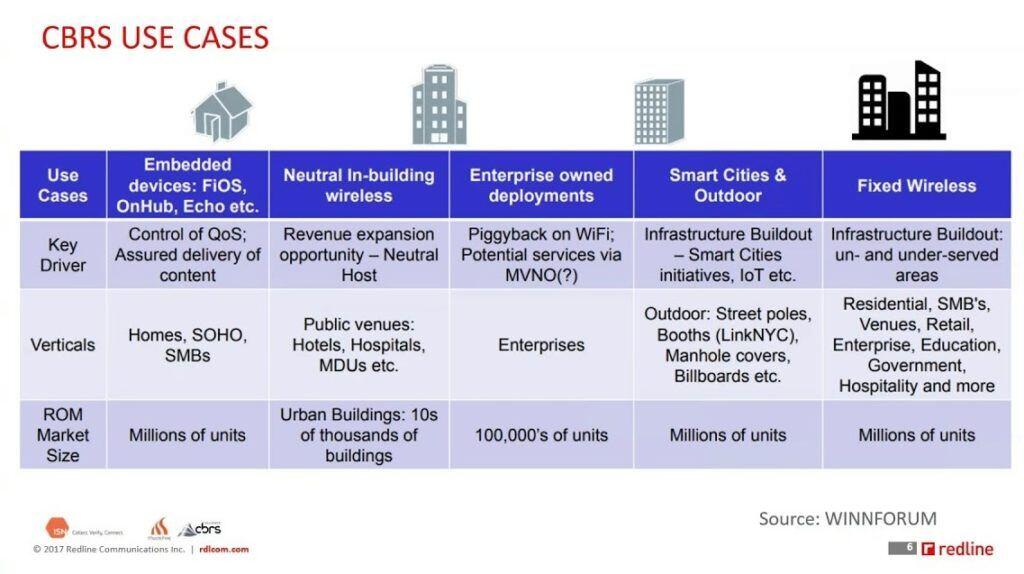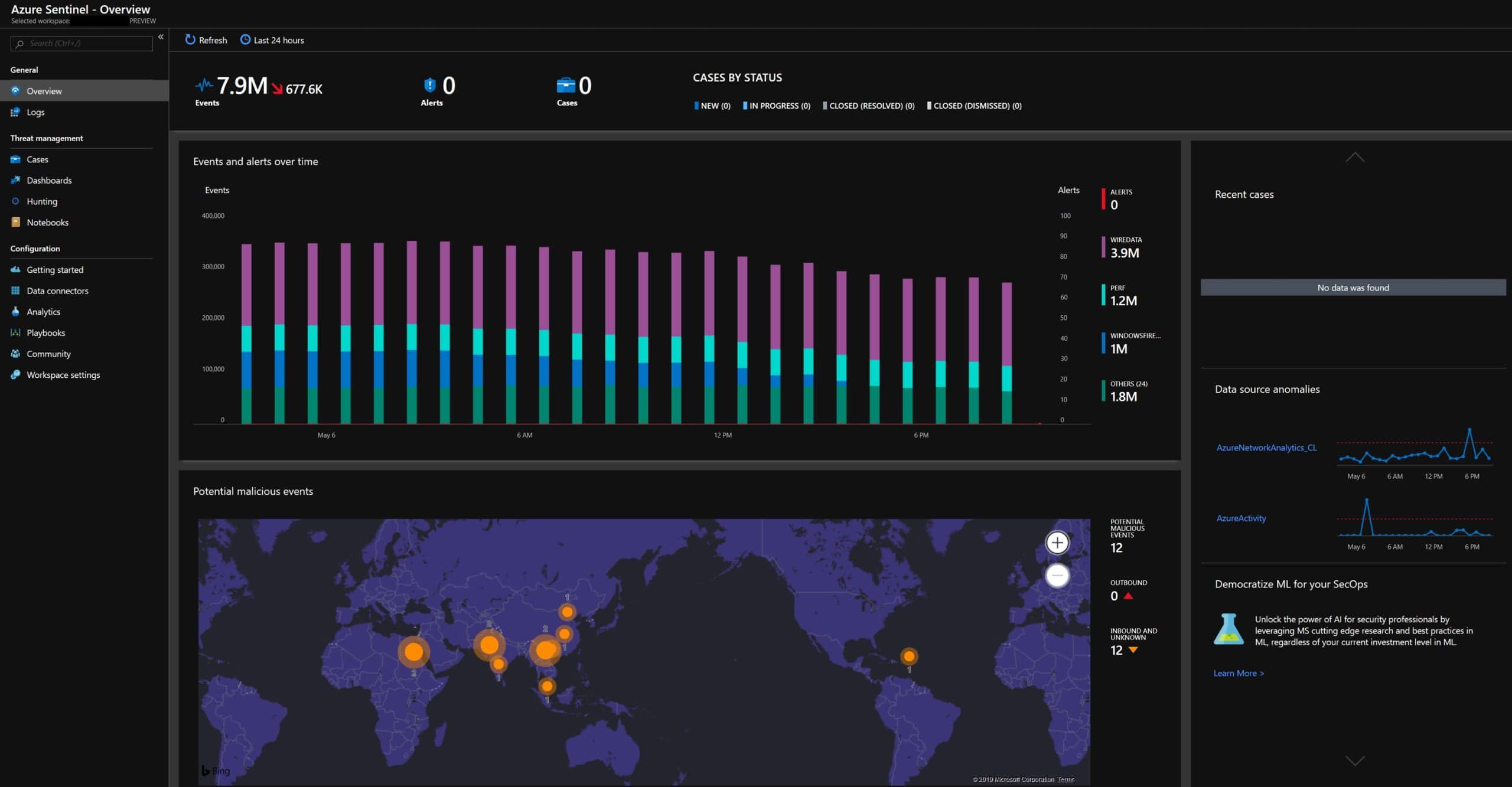CBRS Deployments set to Drive Innovative Wireless Solutions
Citizens Broadband Radio Service (or CBRS for short) is the basis on which organizations can build their own private 4G/5G networks. Built in a 150 Mhz section of the radio spectrum between 3550 MHz and 3700 MHz (commonly referred to simply as "3.5 GHz"), the freeing up of the CBRS band stems from the 2010 National Broadband Plan issued by the FCC, which set out to make 500 MHz of additional spectrum available for new mobile uses.
The FCC zeroed in on the 3.5 GHz band in rules issued in April of 2015, then reaffirmed those rules about a year later. In the meantime, it has worked out the details of implementation, which until quite recently was reserved by DOD incumbents, primarily for seaborne and coastal radar systems. In an partnership between the FCC, military, and industrial/commercial entities, this valuable spectrum is being unlocked, representing a 16 percent expansion in the commercially available sub-4GHz spectrum.
The CBRS band has been dubbed the "innovation band" by the FCC and others. CBRS Alliance, which oversees the rising OnGo CBRS standard, estimates the commercialization of CBRS will generate tens of billions in new economic value.
Deployment Model
Service providers are expected to explore using CBRS to replace last-mile fiber access, deliver fixed wireless services, provide flexible bridging to current generation technologies, and even offer point-to-multipoint offerings. Enterprises and managed service providers could exploit it for IoT connectivity, Wi-Fi replacement, or supplementary services. CBRS-based LTE services could hit 1Gbps indoors, and 5 - 10 Gbps for outdoor uses with line-of-sight access.
CBRS spectrum is exposed to users in a three-tiered licensure system that enables enterprises and agencies to stand up private LTE networks in the 3.5GHz spectrum, provided their network can ensure — via Environmental Sensing Capability (ESC) — that it will not interfere with incumbent (e.g. military) operations in the CBRS band. Spectrum sharing operates on the innovative Spectrum Access System (SAS) model, which automatically coordinates frequency access on a tiered scheme.

With the recent commercialization of CBRS in the US, private LTE is an increasingly viable backbone for consumer and IoT networks. Historically, to build a private LTE network you would either have had to go through a lot of hassle to get a Distributed Antenna System (DAS) that also locks you into a specific cell carrier, or use an unlicensed 5GHz LTE offering within a relatively small ecosystem.
Problems Solved
CBRS promises to solve a number of issues both for cellular consumers, who often experience only spotty coverage in buildings and also for in-building and indoor/outdoor-based providers. Because of the flexibility of CBRS --- which provides a good mix of performance, open access, low cost, signal propagation characteristics, and range --- we see incumbents and vendors ready to attack it from all sides. Wireless access point makers will see it cutting into their revenue model, and wireless cellular carriers will see it as competition for their indoor and venue deployments (micro-cell, nano-cell, and pico-cell). And for IoT networks (smart city, security, sensor monitor, etc…) and consumer access, we'll see arguments that pre-existing WiFi backbone(s) are cheaper to deploy, without the honest conversation around security, range, consistency, and reliability differences. Or, you'll see developers try to stitch together BLE, LoRa, WiFi, and/or cellular into an ad-hoc assemblage that tries to cover all the blindspots and achieve wide-area network coverage.
We all know that cell carriers historically have dominated a lot of the good spectrum, excluding backbone providers, cable and tech companies, and almost anyone else that can't win a spectrum auction, from competing. With neutral-host LTE becoming viable on CBRS, cell carriers are no longer the sole gatekeepers of so much of the “sweet spot” of commercially available spectrum.
Consumers and Organizations Benefit
Connectivity via CBRS can enable users and organizations to avoid paying per-device cellular carrier fees. CBRS can enable users with devices already commonly available to roam to CBRS 4G/5G networks --- providing three-to-four times the range it would have seen if attempting to use building WiFi, and without any of the headaches of managing WiFi security. Deployment is easy, and user access provisioning can be cloud-delivered to devices with an eSIM or physical SIM card is all that's required.
And many consumers have devices with CBRS support (FCC Band 48) already. Apple, Google, Lenovo, LG, OnePlus, Motorola, Samsung, and others have phones, tablets, and laptops with Band 48 support. There are consumer gateways and mini hotspots that can use CBRS for uplink, while broadcasting traditional WiFi (and some even providing VOIP services to the customer).
CBRS should be reviewed by RENs (Research & Educational Networks), municipal and community broadband organizations, those working on smart cities deployments, companies looking to leverage IoT and data to drive automation, efficiency, and improved workflow, and organizations aiming to decrease the digital divide or democratize access to broadband.
Use Cases
Private LTE on CBRS is extremely flexible.
Think about a school district that needs to provide virtual schooling to key neighborhoods that are underserved by current broadband providers...
Think about a large city that pays national carriers monthly for cell phone, data card, and other mobile device charges (police laptops in cars, fire terminals, cell phones, maybe even some security cameras or other monitoring)…
Think about an innovation sector, building a testbed for smart city or smart vehicles…. Or actually deploying building IoT sensors at scale without worrying about WiFi...
Or a corporation, maybe one who has fully embraced modern applications like Microsoft Teams for collaboration and communication… a CBRS network across their campus would allow complete in-building and external coverage, without paying for carrier LTE, allowing employees to be working productively in the places that meet their needs.
So you can see there are a number of use cases for CBRS:
- Bridging the digital divide:
- Broadband as a utility
- Democratizing access
- Educational enhancement
- Distance learning
- Work from home
- Smart Cities / Innovation Sectors
- IoT
- Security / Public Safety

The landscape for deploying sector, cell, building, and other flexible coverage options via CBRS is growing by the day, and with robust software control platforms that are cloud-native, secure, and provide excellent telemetry and reporting. At the same time, the economics of CBRS are much better than those of distributed antenna systems, and with better speed and consistency of service than Wi-Fi. Our Innovation Lab looks forward to the future of CBRS, and seeing what innovative new services will be enabled by the availability of more cheap spectrum.
Stay connected. Join the Infused Innovations email list!
Share this
You May Also Like
These Related Posts

Purpose-Built Virtual Environment Saves Millions of Dollars

Purpose-Built Virtual Environment Saves Millions of Dollars

No Comments Yet
Let us know what you think